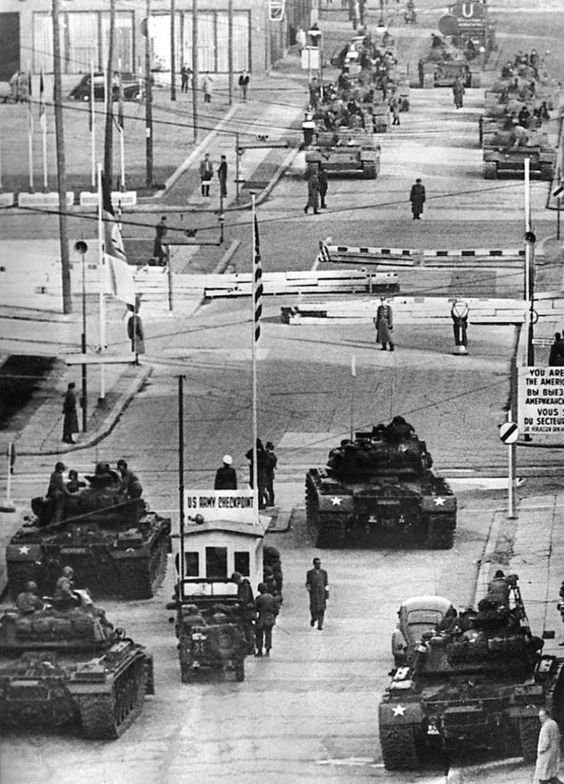This may be considered the most insane conflict of the twentieth century: it almost led the world to its complete destruction, and its developments have forged much of the current geopolitical context. This is the clash, even if indirect, between two powers with distinct political and economic visions, known today as the Cold War (1945 - 1991).
In this post, I have selected 3 crucial points to understand this conflict and understand its dimensions and repercussions in the present day.

1. The Causes;
To invade Nazi Germany the USSR moved its Red Army towards the West, occupying several countries on its way to Berlin. At the Yalta Conference, the Allies signed an agreement with Stalin to respect the new democracies and allow free elections in the countries liberated by their army, which did not occur: at the first opportunity, opponents of communism were silenced in various ways in these places.
This fear of an expansion of communism in Europe led the United States to intervene on the continent - first in the economic sphere (Marshal Plan, 1946), then in the form of a political-military organization (NATO, 1949). Not least, Berlin was blocked by the Allies and divided by a wall that would only fall in 1991, and the countries in the sphere of Soviet influence (previously liberated by them) would find themselves increasingly closed to the West under the command of the communist parties.
2. Arms Race and Mutual Assured Destruction (MAD);
This can be considered one of the points that best characterized this conflict. At the end of World War II, in this final period of postwar decisions, the United States presented the world with its newest weapon: the nuclear bomb. Soviets - shortly thereafter, in 1949 - developed their own, and increasingly, both sides created larger, more powerful and far-reaching missiles.
This race led to the world of self-destruction. When we talk about the Cold War, we call this Mutual Assured Destruction (MAD) rumor - if one side carried out a nuclear attack, the other would respond immediately.
Fears almost became real when Nikita Khrushchev deployed nuclear missiles in Cuba in 1962 and could easily attack much of the American territory. After US pressure, through a naval blockade and threats of invasion of the island, the Soviets withdrew their weapons from there.
3. Military Interventions on the Two Sides;
Another striking fact of this war: by the impossibility of a direct attack, Americans and Soviets led the dispute for influence to other regions of the globe. One of the first battle stages was the Korean Peninsula in 1950.
In general, governments were overthrown by revolutionary groups linked to Soviet communism - by whom they were supported with weapons and the like. The Allies, threatened by the expansion of the Block, intervened warily in the region until they completely dominated it. The Vietnam War (1955 - 1975) followed a similar process, leading to a shattering military defeat in the United States.
The Soviet bloc also had its setbacks in intervening in other countries. His greatest: Afghanistan, 1979. In attempting to confront the Islamic fundamentalist movement, opposed to communism in the country, the Soviets entered the region in 1979 and from there they had to withdraw in 1989 after failing to defeat the mujahideen militias.
4. Conclusion.
The world we see today is a product of what happened in the Cold War. Just look at the newspapers and see the conflict in Asia, around North Korea and its production of ballistic missiles, or several other conflicts around the world since then.
Military history has never been the same after the Cold War: enemy armies will rarely engage in wars of friction again, with the push of a button, and hundreds of nukes will fall into the opponent's territory, decimating it completely - and that is a direct legacy of the arms race of this period.
I hope these topics have helped you to understand a little more than this war was; do not forget to leave your questions or comments 😏.
Tumbrl: Conversations with History